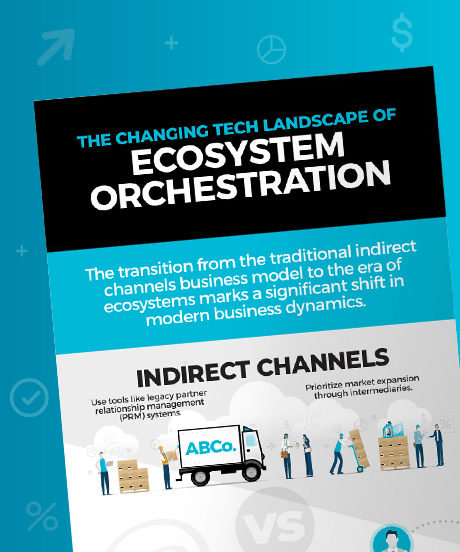Ecosystem Orchestration is the process of strategically coordinating and integrating different stakeholders, technologies, and processes within a network or ecosystem to achieve shared goals and deliver value.
This involves:
- Aligning partners and resources
- Facilitating seamless interactions
- Streamlining data and workflows
In practice, businesses use ecosystem orchestration to foster collaboration among participants, such as suppliers, partners, customers, and technology providers. This enables the creation of innovative solutions, improves operational efficiency, and accelerates time-to-market for products or services.
Ecosystem orchestration is critical as it leverages the collective strengths of the ecosystem, driving growth, enhancing customer experiences, and building competitive advantages. It also helps businesses adapt to changing market conditions, ensuring long-term sustainability in a dynamic environment.
Centralize Ecosystems to Adapt to Market Trends

Infographic
The Changing Tech Landscape of Ecosystem Orchestration
The transition from the traditional indirect channels business model to the era of ecosystems marks a significant shift in modern business dynamics.
The new world of Ecosystem Orchestration fosters innovative, seamless collaboration and flexibility.
See the contrasts of Ecosystem Orchestration with the constrictions of traditional PRM and the impact of this implementation on your business.
